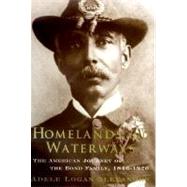
| Heritage: Groundwork and Waterscapes | p. 3 |
| John: Odyssey of an Able-Bodied Seaman, 1846-1864 | |
| Mongrel Liverpool, Empire, and the "Nigger Jack" | p. 15 |
| New Bedford, the Cambridge, and "Seeing the Elephant" | p. 38 |
| An Able-Bodied Seaman No More | p. 71 |
| Emma: Old Bonds, New Bonds, 1846-1870 | |
| "Turkey Buzzard Lay Me": A Childhood in Tidewater Country | p. 91 |
| Wartime Norfolk, Liberty, and a Legitimized Marriage | p. 122 |
| Fire, Ashes, and the Hobbled Phoenix | p. 156 |
| Northern Exposures, 1870-1905 | |
| No Room at the Inn | p. 183 |
| Citizenship, Fraternity, and a Dutiful Son | p. 211 |
| Wake of the Lancaster: Little Brown Brother and the Navy Blues | p. 241 |
| Walking in Emma's Footsteps: Time and Tides along Mother Brook | p. 274 |
| Percy's Tribe, 1902-1926 | |
| Wizardry, and Jim Crow's Alabama Trilogy | p. 303 |
| Carrie: Theories of Evolution and the Company of Women | p. 342 |
| Captains' Tales, Before and Beyond the Great Wars | p. 379 |
| Capital Times: "A Paradise of Paradoxes" | p. 428 |
| All the World's a Stage | p. 473 |
| The Widow's Might: Further Hyde Park Chronicles, 1905-1926 | |
| Purgatory: The Poisoned Tree | p. 503 |
| Nights When the Music Stopped | p. 529 |
| Notes | p. 553 |
| Acknowledgments, and Coming to Conclusions | p. 655 |
| Index | p. 663 |
| Table of Contents provided by Blackwell. All Rights Reserved. |
The New copy of this book will include any supplemental materials advertised. Please check the title of the book to determine if it should include any access cards, study guides, lab manuals, CDs, etc.
The Used, Rental and eBook copies of this book are not guaranteed to include any supplemental materials. Typically, only the book itself is included. This is true even if the title states it includes any access cards, study guides, lab manuals, CDs, etc.
Excerpted from Homelands and Waterways: The American Journey of the Bond Family, 1846-1926 by Adele Logan Alexander
All rights reserved by the original copyright owners. Excerpts are provided for display purposes only and may not be reproduced, reprinted or distributed without the written permission of the publisher.